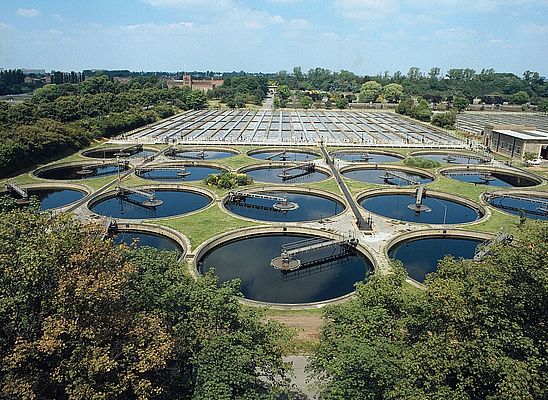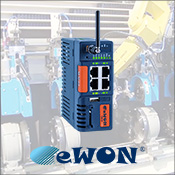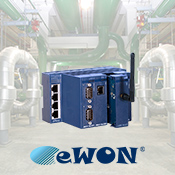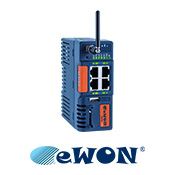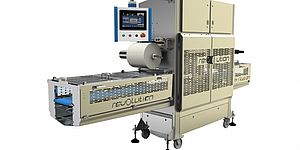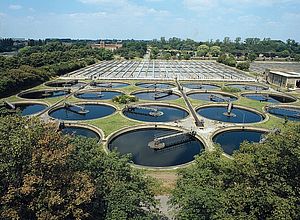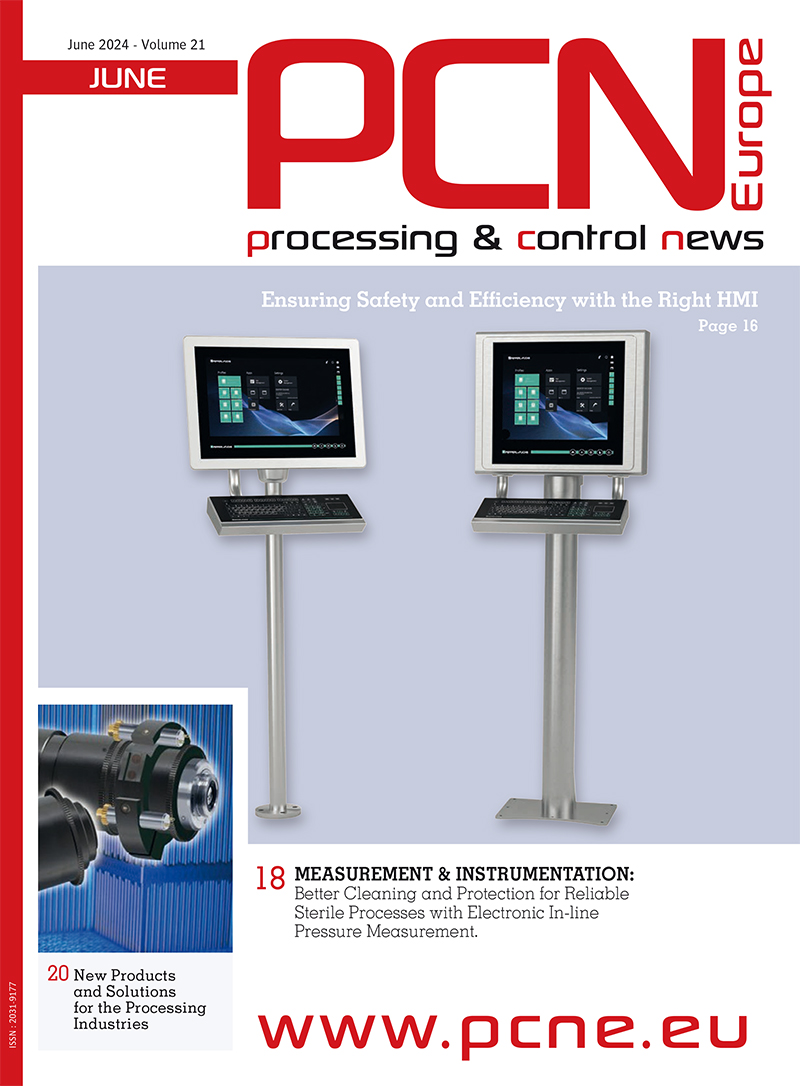By installing industrial-grade Ethernet routers – which provide secure, ADSL and GPRS-based remote control and diagnostics – Thames Water will be able to remotely monitor and control critical assets located at its water pumping stations and sewage treatment works across the UK.
Thames Water is the UK’s largest water and wastewater services provider, with 14 million customers and 4,500 employees. Thames Water operates and maintains 100 water treatment works, 30 raw water reservoirs, 288 pumping stations and 235 clean water service reservoirs. On the sewerage side of the business, Thames Water operates and maintains 350 sewage treatment works and 2,530 pumping stations.
Jim Grandison, Workstream Lead for the SCADA Delivery Program at Thames Water comments: “We are using eWON Ethernet routers primarily to achieve secure, remote communications to critical monitoring and control equipment, installed in our waste water pumping stations and sewage treatment works. This project is part of our £4.9bn investment programme between 2010 and 2015 to improve our water and sewage networks, and the systems we use to run them, with the main aim of providing a better service for our 14m customers. This includes the delivery of more than 8,300 RTUs [remote telemetry units] to a variety of water and sewage pumping stations across the UK.”
As Jim Grandison puts it: “As a business, we want to change the way we monitor and control our remote assets. This means moving from our existing IT communications infrastructure based on traditional technologies – a mixture of dial-up leased lines, ISDN, packet-switching, Telex and other legacy communications equipment – to what we call a near-real time approach.”
“The problem with dial-up is that the data you are looking at is historical, perhaps as much as 24 hours out of date. In order to provide up to date, relevant customer service data and to be able to respond more quickly to any operational issues, we need to have access to information about our assets in real time and to be able to respond to that information, without having to send engineers to site, to check what the actual problem is,” he adds.
From Historical to Proactive Asset Management
The important thing, says Grandison, is that our customers require clean, drinkable water, delivered in a timely fashion with minimal interruptions. “In water pumping stations, we have traditionally monitored only the outcome of a failure after it has occurred, but not why that asset failed. A water pump, for example, may not be able to cope with some local flooding and so we need to know what is causing the problem with the pump so that we can react accordingly or even predict when the failure is likely to occur. With the eWON devices, we can immediately gain access to diagnostic information. This real-time remote monitoring approach supports our ongoing five-year Asset Management Programme, which will see our business change from ‘historical’ to ‘proactive’ management of assets.”
“The objective is to be able to mobilise the right people with the right tools, in order to go to site to rectify any problems. Previously, we would have to send an engineer or team of engineers to site to investigate the problem first, then decide who and what tools to send in next. This new method will be far more efficient for us as a business and means we’ll be able to fix the problem right first time and therefore minimise supply interruptions to customers.”
Thames Water is already in the process of installing more than 450 eWON routers across a similar number of ‘high priority’ sites in the UK, in conjunction with a PLC/RTU device, to monitor and control site processes. The role of the eWON device is to provide secure, resilient, remote-access through the Internet, to the PLC/RTU devices on site, using a combination of both Broadband ADSL and GPRS/3G.
The ‘eWON’ range of VPN routers has been specifically designed for industrial use, in order that it can intelligently interface with a wide range of automation and control devices, including all major PLCs brands, instruments, data-loggers, Modbus controllers, as well as legacy serial devices. In the UK theWON range is available from their distributor M.A.C Solutions.
Reliable, Secure Connectivity
Dave Hammond, Ethernet Product Manager at M.A.C Solutions comments: “The devices we’ve supplied to Thames Water incorporate an ADSL 2/2+ modem, as well as an integrated cellular GPRS modem, for use as an alternate ‘fail-over’ access. The eWON 2104CD functions as a VPN IP router and transparent gateway, enabling secure, remote access to the PLC/RTU device connected behind the eWON, at each site.”
“Using their in-built library of PLC protocols, each device can monitor process data in real-time from the site PLC/RTU. In addition, they continually feed the site PLC/RTU with real-time data, concerning the health and status of the comms links on the site. Thus data concerning the behaviour of the site ADSL link, GPRS link and VPN link to ‘HQ’ are processed in the same ways as data concerning the other site processes. The eWON can also be controlled by the PLC, giving total integration between the site process and the site comms.”
The objective is to ensure reliable, resilient remote communications, through the eWON to the PLC/RTU on each site, from a master control station at ‘Thames HQ’. These links need be used for multiple purposes simultaneously, such as to gather data, modify process parameters, backup site devices and also perform device maintenance.
The ADSL and GPRS infrastructure between the Thames Water’s central IT infrastructure and the remote sites is provided by Third Parties. Hence, it is imperative that the links are secure and that the data is encrypted. This central infrastructure is made up of multiple VPN concentrators or ‘local hubs’ and regional SCADA systems. “Rather like spokes on a bicycle wheel, each eWON device at the end of a spoke is connected to a VPN concentrator at the centre. Across these secure VPN links, eWON devices will pass live real time data to and from site assets, such as pressures, flows, temperatures, status of equipment and so on,” explains Hammond.
Jim Grandison: “Not all of our sites will require an eWON device, as some assets will only require simple, battery-powered data loggers to monitor parameters such as remote pressures. However, we will install devices on critical equipment that we believe requires a reliable real-time connection to our centralised IT infrastructure and SCADA systems. With the ability to switch between ADSL and GPRS modems, the eWON gives us a real advantage here, as it guarantees connectivity and visibility of real time information from our most important assets. In addition, as Thames Water introduces more intelligent assets and equipment into its pumping stations and sewage treatment works, guaranteed, always-on connectivity will become absolutely critical to what we are trying to achieve.”
“As a utility business, our needs are constantly changing. A wet winter or a dry summer can affect our operations significantly. Our assets, control systems such as PLCs and our overall communications infrastructure is disparate. We therefore had to select open communications technologies and routers that will enable us to minimise costs and enable us to remotely change, reconfigure or re-profile devices without sending engineers to site.”
As Grandison concludes: “The project wouldn’t have been possible so far without the excellent technical support and assistance we’ve had from M.A.C Solutions, who have performed over and above the call of duty on this programme. We look forward to continuing this relationship for the remainder of the project, as we roll out to the rest of our priority sites in the UK.”
Ethernet router enables remote monitoring
of water pumping stations
- by EWON
- March 29, 2012
- 165 views


